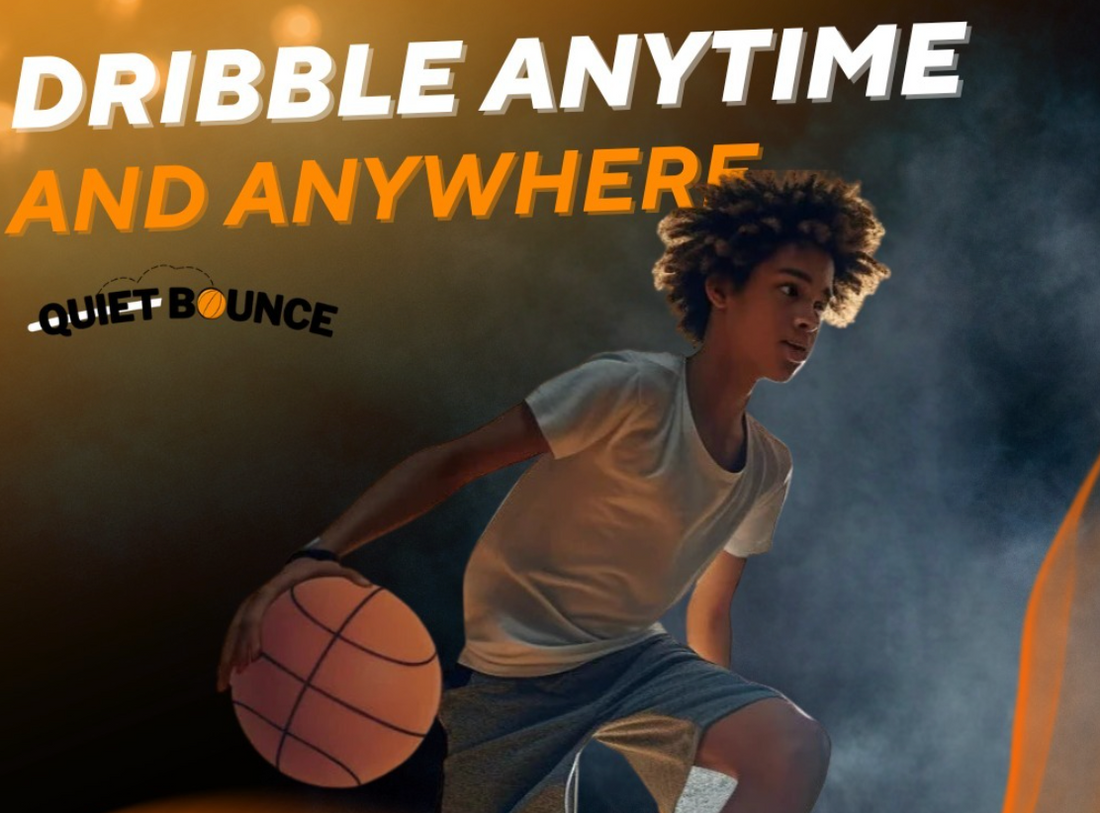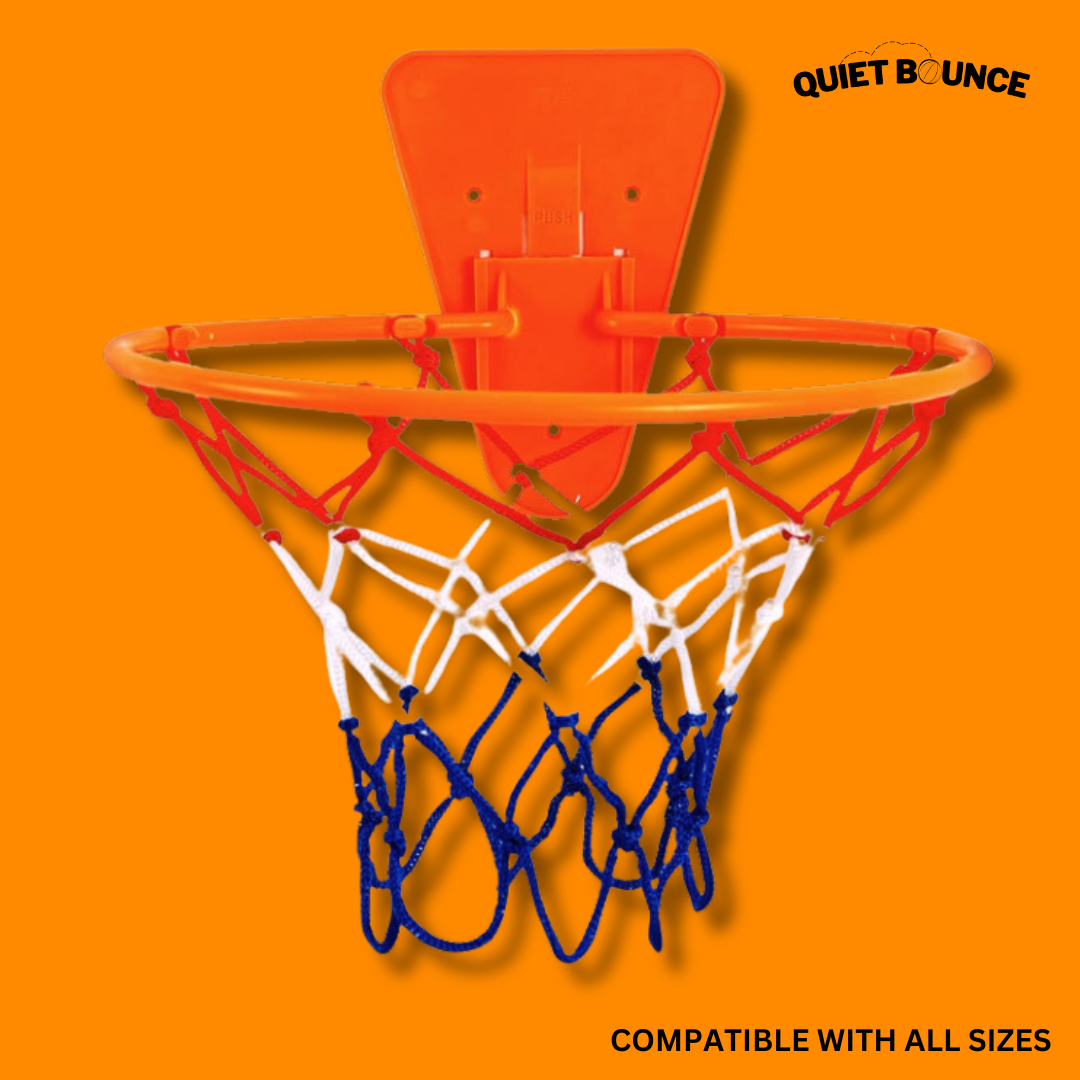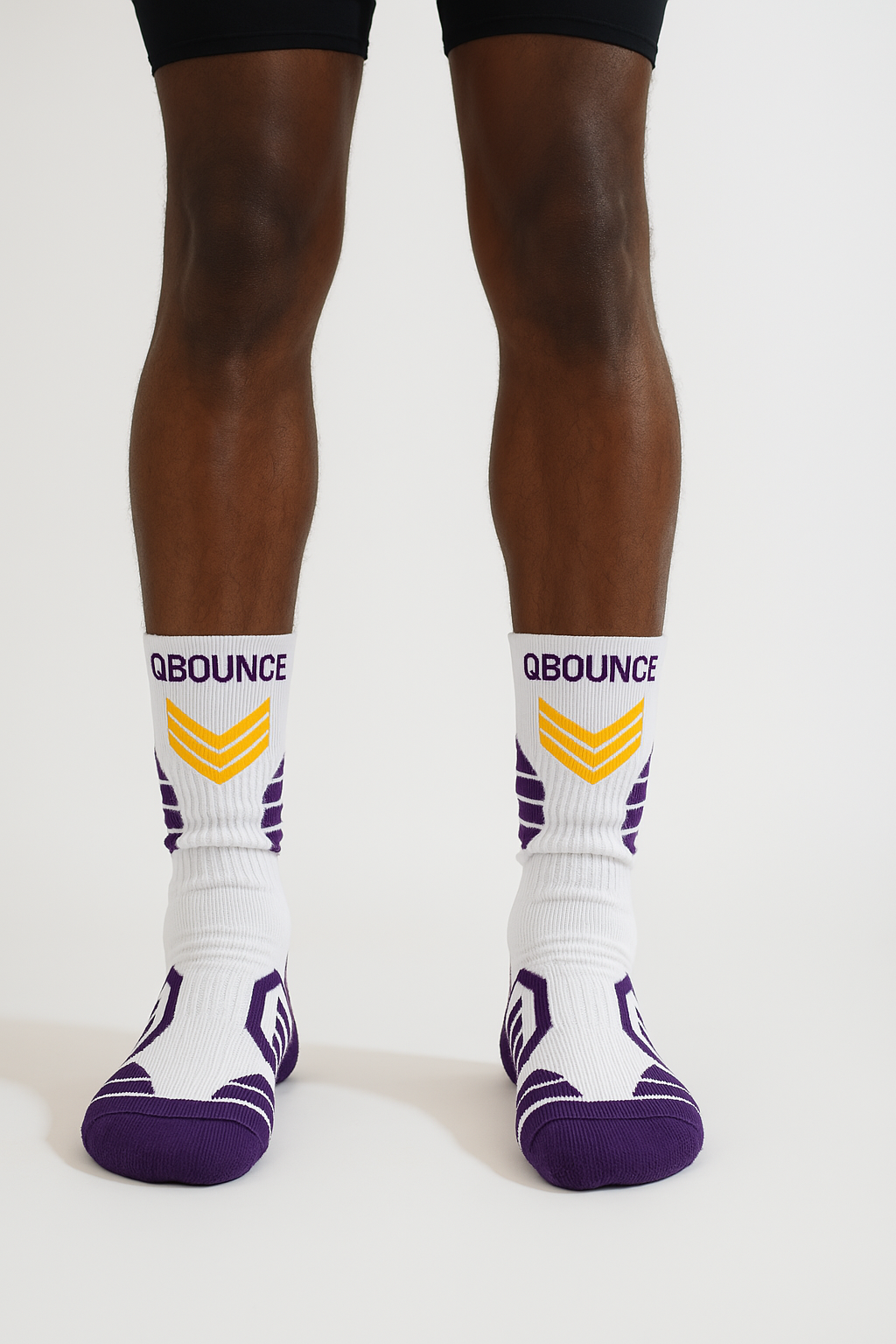
8 Basketball Dribbling Drills You Can Do Inside Your House
Share
Are you trying to improve your basketball skills but find yourself stuck indoors? With these drills, you won’t have to stress about not getting enough reps; these dribbling drills will help you increase your handles and dominate the floor. All you need is a quiet indoor basketball and a few regular household items, and you’re good to go.
Best At-Home Basketball Dribbling Drills
1. Basic Ball Handling
Let’s start simple. Get into an athletic stance with bent knees and your feet shoulder-width apart. Begin dribbling with your dominant hand, using your fingertips for control. Then switch to your non-dominant hand, aiming for equal control and consistency. It may feel unnatural at first, but practice makes perfect. Progress to alternating hands to enhance your coordination and simulate live game situations. After you're comfortable dribbling around thigh to waist high, lower your dribble closer to the ground. Practice at various speeds and rhythms, which will test your speed & focus. Introduce movements like shuffling or pivoting while maintaining the low dribble to simulate game speeds too.
2. Speed Dribbling
Start by dribbling the basketball at a comfortable pace, focusing on quick, controlled dribbles using your fingertips. Gradually increase your speed while maintaining control to improve hand-eye coordination and reaction time. Introduce changes in direction during speed dribbling, like crossovers or behind-the-back moves. Set up a course with cones or markers and practice dribbling through it swiftly, weaving in and out with control. For endurance, dribble continuously at a fast pace for set durations, like 1 or 2 minutes, incorporating various moves like crossovers and between-the-legs dribbles. Use interval training, alternating between high-speed dribbling and short rests, gradually increasing duration and intensity.
3. Change of Pace and Direction
Dribble the basketball slowly with control, then suddenly switch to a fast dribble to surprise defenders (you’ll have to use your imagination if you’re at home alone, or you can practice with a family member). Practice transitioning between slow and fast dribbling, incorporating moves like crossovers or between-the-legs dribbles.
Start dribbling in a straight line, then swiftly shift direction to the left or right while controlling the ball. Change directions smoothly, using body and footwork to create space and protect the ball. Add dribbling moves like hesitation or spin moves for unpredictability. Use cones or markers to simulate defenders and practice navigating around them with quick directional shifts. Regular practice of these types of drills will enhance your dynamic dribbling skills, making you harder to defend on the court.
4. Behind the Back Dribbling
Dribble with your dominant hand, then shift the ball behind your back to your non-dominant hand. Practice this behind-the-back transfer slowly, then increase speed for a smooth handoff. Once you feel comfortable, combine this move with other dribbles like crossovers to confuse defenders.
Begin practicing the behind-the-back dribble in a stationary position, then add movement by stepping forward or backward to progress the difficulty. Challenge yourself with changes in direction and speed during the dribble to enhance effectiveness in game scenarios. Practice in different court areas to adapt to various situations and defenses.
5. Crossover Dribbling
The crossover is one of the most infamous moves in basketball, as long as you can actually cross your defender over. You’ll likely start with your dominant hand, then quickly shift the ball to your non-dominant hand with a quick, low crossover in front of your body. Practice this move slowly at first, then increase speed, focusing on a quick, tight crossover for control.
Once you have the basics down, vary it with a between-the-legs dribble or behind-the-back crossovers for unpredictability. Start performing the crossover stationary, then add forward or backward steps to simulate game-like movement. Incorporate changes in speed and direction, combining a quick crossover with an explosive drive to the basket. Practice the crossover in different court areas to adapt to various game positions.
6. Figure-Eight Dribbling
It’s unlikely that you’ll use this move in a game or even in practice, but it looks cool and it will help you become more comfortable with the ball in your hand, making other moves easier in the future. Start in an athletic stance, dribbling with your dominant hand, then move the ball in a circular motion: in front, between your legs, and behind your back to your non-dominant hand. Continue the figure-eight pattern, transitioning smoothly between hands.
Use cones or markers as obstacles to enhance spatial awareness and control in tight spaces. For precision, try the drill with a smaller ball, like a tennis ball, to refine your touch and control.
7. Spider Dribble
Again, you probably won’t use this in a game. But once you learn it, you’ll have way more touch on your individual fingers, especially low to the floor. To perform the spider dribble, get in a low athletic stance with your feet a bit wider than shoulder-width apart. With both hands in front of your body, touch the ball with your right hand close to the floor (1st dribble), then quickly with your left (2nd dribble). While your left hand is dribbling, move your right hand behind your right leg and dribble the ball against the floor (3rd dribble) immediately after your left hand touches the ball. Then bring your left hand behind to make the 4th dribble of the series. Once you’ve done this, go quickly back to the 1st dribble of the series and repeat as many times as possible without dropping the ball. It will seem confusing at first, but soon enough you’ll get the hang of it.
8. Two-Ball Dribbling
Start in an athletic stance, holding a basketball in each hand, palms down. Begin dribbling both basketballs simultaneously at the same height and rhythm, using your fingertips for control. Start slowly, then increase speed as you gain comfort. For alternating rhythms, dribble one ball at a regular pace and the other at a faster pace, switching the fast dribble between hands to improve coordination. Incorporate movement into the drill by taking steps forward, backward, or laterally while maintaining the two-ball dribble. Add directional changes like crossovers or behind-the-back moves while controlling both balls. You won’t use this move in a game, but it will improve your ambidexterity and overall ball control.
These 8 at-home basketball dribbling drills will help you improve your ball handling skills and enhance your control on the court. From basic ball handling to advanced techniques like the spider and two-ball dribbling, each drill targets key aspects of coordination, speed, and agility. Whether you're practicing alone or with a partner, these basketball drills require minimal space and equipment, making them perfect for indoor training, especially with the Quiet Bounce basketball.




